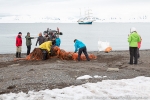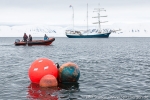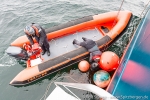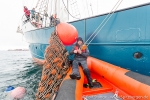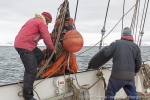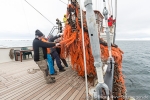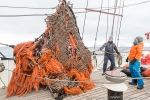-
current
recommendations- Liefdefjord
New page dedicated to one of Spitsbergen's most beautiful fjords. Background information and many photos.
- New Spitsbergen guidebook
The new edition of my Spitsbergen guidebook is out and available now!
- Liefdefjord
New page dedicated to one of Spitsbergen's most beautiful fjords. Background information and many photos.
Page Structure
-
Spitsbergen-News
- Select Month
- June 2025
- May 2025
- April 2025
- March 2025
- February 2025
- January 2025
- December 2024
- November 2024
- October 2024
- September 2024
- August 2024
- July 2024
- June 2024
- May 2024
- April 2024
- March 2024
- February 2024
- January 2024
- December 2023
- November 2023
- October 2023
- September 2023
- August 2023
- July 2023
- June 2023
- May 2023
- April 2023
- March 2023
- February 2023
- January 2023
- December 2022
- November 2022
- October 2022
- September 2022
- August 2022
- July 2022
- June 2022
- May 2022
- April 2022
- March 2022
- February 2022
- January 2022
- December 2021
- November 2021
- October 2021
- September 2021
- August 2021
- July 2021
- June 2021
- May 2021
- April 2021
- March 2021
- February 2021
- January 2021
- December 2020
- November 2020
- October 2020
- September 2020
- August 2020
- July 2020
- June 2020
- May 2020
- April 2020
- March 2020
- February 2020
- January 2020
- December 2019
- November 2019
- October 2019
- September 2019
- August 2019
- July 2019
- June 2019
- May 2019
- April 2019
- March 2019
- February 2019
- January 2019
- December 2018
- November 2018
- October 2018
- September 2018
- August 2018
- July 2018
- June 2018
- May 2018
- April 2018
- March 2018
- February 2018
- January 2018
- December 2017
- November 2017
- October 2017
- September 2017
- August 2017
- July 2017
- June 2017
- May 2017
- April 2017
- March 2017
- February 2017
- January 2017
- December 2016
- November 2016
- October 2016
- September 2016
- August 2016
- July 2016
- June 2016
- May 2016
- April 2016
- March 2016
- February 2016
- January 2016
- December 2015
- November 2015
- October 2015
- September 2015
- August 2015
- July 2015
- June 2015
- May 2015
- April 2015
- March 2015
- February 2015
- January 2015
- December 2014
- November 2014
- October 2014
- September 2014
- August 2014
- July 2014
- June 2014
- May 2014
- April 2014
- March 2014
- February 2014
- January 2014
- December 2013
- November 2013
- October 2013
- September 2013
- August 2013
- July 2013
- June 2013
- May 2013
- April 2013
- March 2013
- February 2013
- January 2013
- December 2012
- November 2012
- October 2012
- September 2012
- August 2012
- July 2012
- June 2012
- May 2012
- April 2012
- March 2012
- February 2012
- January 2012
- December 2011
- November 2011
- October 2011
- September 2011
- August 2011
- May 2011
- April 2011
- March 2011
- February 2011
- January 2011
- December 2010
- November 2010
- September 2010
- August 2010
- July 2010
- June 2010
- May 2010
- April 2010
- March 2010
- February 2010
- November 2009
- October 2009
- August 2009
- July 2009
- June 2009
- May 2009
- April 2009
- March 2009
- February 2009
- January 2009
- December 2008
- November 2008
- October 2008
- August 2008
- July 2008
- June 2008
- May 2008
- April 2008
- March 2008
- February 2008
- April 2000
- Select Month
-
weather information
-
Newsletter

| Guidebook: Spitsbergen-Svalbard |
Home
→ January, 2017
Monthly Archives: January 2017 − Travelblog
The sea monster (a plastic story)
992 kilos of garbage… and still a lot more. That is the title of a blog written by my colleague Birgit Lutz on her website (click here to get to her blog).
And still a lot more! That says it all. Pretty much everybody who has been with us on Antigua to Spitsbergen knows that we collect a lot of plastics on almost every trip. We are easily talking about several hundred kilos per trip, or several cubic metres, in other words.
Why “almost” every trip and not just every trip? Well, weather is one thing. When the ground is frozen or covered with snow, then it is such a thing with collecting plastics. But the main reason is that the distribition of the plastic litter is quite irregular. It is well known that some beaches are really waste dumps, and these are in many cases the remote ones, where few people ever get. That has to do with local currents.
Other beaches are quite clean. How much plastic litter have you seen in Kongsfjord, Krossfjord or Magdalenefjord? Probably not too much (of course there is some, it is everywhere!). But in Smeerenburg, virtually around the corner from the latter one, how many bigbags did we fill there over the years? No idea, I should have counted them. It was a lot, that’s for sure.
Yes, that is exactly what is coming on top of it: tourists are collecting plastic litter. Not all of them, but many ships in the fleet do join in this meaningful task, including the Oceanwide fleet and Antigua. We have been doing that for many years now. Not only since the administration officially started with the “Clean up Svalbard” programme. We don’t need to be encouraged by anyone to free the beaches from the plastics. Needless to say it is a great project, it gets more people to join in, but we are not blind, and it is such an obvious thing that the plastic litter needs to be removed from these beautiful arctic beaches!
And it is to a good effect. You should have seen Smeerenburg 15 years ago. A waste dump! Now it is reasonably clean again, as it is a place that is regularly visited and many people take their bit. On the other hand, every incoming wave brings more plastic litter.
So that is one of the lessons that we had to learn, and it was an obvious one. You can fight the plastic-problem on location, but you can not solve it there. Same as with climate change and the ozone depletion, these are global problems that need a global solution. It is for a reason that I have mentioned the ozone “hole” here, as it shows that the international community is actually able to deal with a global problem. If everybody joins and takes his or her share of the responsibility. Which is not even too much of a burden then!
Why is it actually a problem, beyond the visual aspect? Very simple: the plastic litter messes up the whole marine food chain and it is directly threatening countless animals. There is hardly a northern fulmar these days that does not have plastic in the stomach. Albatross chicks are dying from it in large numbers in some remote colonies. And these are just a few well-known examples. Most marine animals have got plastic in their system. It is colourful, it has the size of their food (whatever size that is – plastics have any size) and after a while it even smells good to those creatures, when it is overgrown by algae. So more and more animals have a stomach full of plastic and starve to death. As simple as that. And this is not “only” about the suffering and death of the individual animal, it is about the collapse of populations, food webs and ecosystems.
You can not overestimate the scale of the problem for marine ecosystems. To which we, as humans, also belong, by the way. Some more than others, but nobody can leave without the oceans. It would be our own dearest interest to get it sorted, the sooner the better. But that is not how we, as a global community, are, unfortunately. Too often, humans are more homo (human) than sapiens (wise).
Of course the countless animals that die a painful death, entangled in ropes and fishing nets, drowning or dying utterly painful when they keep growing inside a rigid net or rope, or starving to death at sea or on land, they are an everyday reality. The word “problem” almost seems to be sugarcoating this reality. It is a global catastrophy, nothing less. Just unseen by most people.

What was near this summer? A “citizen science” research project initiated by the Alfred Wegener Institute, that Birgit Lutz introduced on board good old Antigua and other ships. Many of our fellow guests and crew have made contributions by observing precisely how much plastic there was, what kinds of litter and where. At sea and on land. During the crossing from Norway to Spitsbergen and up north in arctic waters, a total of 18 so-called transects were made, passages at sea where each and every visible piece of litter was noted with position and all information you can think of. The research ship Polarstern collected corresponding data out at high sea in the north Atlantic.
During a number of trips on three ships (Antigua, Noorderlicht, Plancius), Birgit has documented 992.4 kg of plastic litter. The majority (927 kg) is material used in the fishing industry: old fishing nets, ropes, floatation balls, fenders, fish boxes. The rest was mostly packaging (55.69 kg) followed by empty bottles and arcticles of everyday use in the household. Results include some data on amounts of plastic litter on Spitsbergen’s beaches, which amount to 8-43 kg per 100 metres, a value roughly comparable to the North Sea where you have 10-345 kg per 100 m.
Check out Birgit’s blog for these and other details. Thank you very much, Birgit, for all your work on this! That takes the work that we – meaning a lot of people – have done for years up to a new, scientific level. Let’s hope it makes a contribution to knowledge and understanding, which will then hopefully result in global action on individual, society and political levels.
Next to reducing use of plastic, collecting litter in nature will keep us busy for a long time. We will continue doing that in Spitsbergen and wherever we have the chance. We would, by the way, love to do that on Jan Mayen as well, but here Norwegian law (allegedly made to protect nature!) sets a strong stopper. Well, that is another story. But other people take up the challenge of collecting plastic litter at the high seas. A very interesting, promising technique is developed by The Ocean Cleanup, a project that deserves support. Good thing!
Now I got carried a way a bit, but is important. I almost forgot to tell the story of the sea monster. This was my original intention 🙂 so the sea monster, that was a big fishing net that we found in early June 2016 on the coast of Reinsdyrflya in Woodfjord. It was so huge that it was directly clear to me that we would never be able to get it off the beach and on board. It would be better to leave it where it was, half buried in the sand. But I had not taken Birgit’s persistence into consideration. After we had done our excursions and collected the usual smaller bits and pieces of litter, she started to grab some volunteers and to pull and dig on the net. Admittedly, I thought quite some time that it would never work, while I took gloves, shovel and axe to do my bit. But how great can it be to be proven wrong! It took quite a few hours until we managed, with combined forces from passengers and crew of SV Antigua, to get the net out of the sand and towards the beach. Next to many hand, we involved 80 or 100 horses that were galloping in the outboard engines of our Zodiacs, pulling on the net from the sea. Already now it was clear that this thing would be remembered as the sea monster!
It was a beautiful moment when the Zodiacs actually dragged the net free from the beach and into deeper water. We had attached fenders to it to make sure it wouldn’t be lost in the deep, which would otherwise surely have happened very quickly. But now the fun was just about to – well, not to begin, but to keep us busy for another, surprisingly long time. It was more than just a little challenge to get it on board. But a sailing ship has winches here and there. Pulling a sea monster out of the water is different from setting sails, though. Ask Captain Maarten about it! Finally, and it was not the first attempt, the boom with the net swang over the rail and it was lowered on deck under a lot of cheerful shouting.
I have to admit that I was more than just a little bit tired. Dinner did somehow not happen that evening, at least concerning a small group of us who had just kept working. Maybe we just thought we’d finish this quickly (what a silly thought!), I don’t remember. And then I had made the mistake to quickly jump into the Zodiac without a jacket to help the net out of the water at sea level, fixing ropes and so on, while everybody was busy pulling ropes on deck. Big mistake! Of course nothing happens quickly. It was f($!$#ng cold!
- gallery anchor link: #gallery_1117
Click on thumbnail to open an enlarged version of the specific photo.
It was such a great moment to see the net on deck and to know that our lovely chef Sascha was just about to get an extra portion of that great Dutch bread dinner ready. The best midnight dinner I have ever had! Of course I was not the only one who was cold and tired.

So that is the story of the sea monster from Woodfjord. End of story.
P.S. You are curious about how to reduce the use of plastics in daily life? Visit lessplastic!
News-Listing live generated at 2025/June/16 at 01:31:08 Uhr (GMT+1)
